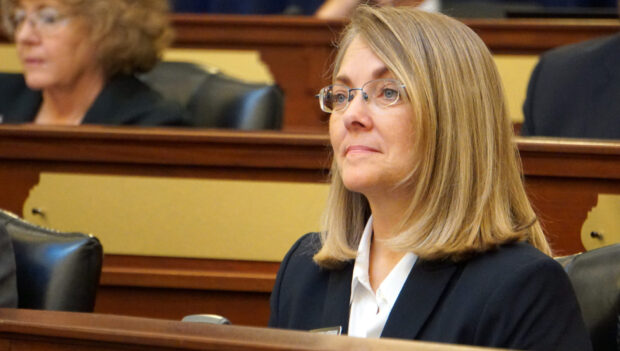The number of applicants for Idaho’s new master educator premiums has increased to 1,405.
About 1,250 applied for the premiums by the June 30 deadline. But State Board of Education officials extended the deadline to July 5 to ensure technology problems didn’t prevent educators from uploading their application portfolios.
Now that the final deadline has passed, the applicant pool stands at 1,405, State Board spokesman Mike Keckler said Monday.
Created by the Legislature in 2015, the master educator premiums are designed to reward Idaho’s most effective and experienced educators with a $4,000 salary bonus, which is being called a premium. Educators who meet the high standards for receiving a premium — including at least six years of teaching experience and a portfolio full of evidence and artifacts demonstrating their mastery of teaching — will receive the $4,000 premium for three years.
Earlier this year, the Legislature set aside $7.2 million to pay for the first year of premiums.

Rep. Wendy Horman, the Idaho Falls Republican who serves as vice chair of the Joint Finance-Appropriations Committee, has followed the program’s rollout with interest.
She noted that $7.2 million will be more than enough to pay for this year’s master educators, which means the state won’t have to dip into rainy day funds to pay for the program. Even if all 1,405 applicants earn a premium, the state will only be on the hook for about $5.6 million this year.
“It’s good to know we appropriated sufficient funds for the program,” Horman said. “Even if 100 percent of the people who applied received it there would be an appropriation to cover that, which is good news.”
Horman said legislators relied on state estimates to provide funding for the program. Last week, Tracie Bent, the State Board’s chief planning and policy officer, said the state had estimated that 8,000-10,000 educators would meet the minimum criteria for the premiums.
That means it appears several thousand teachers who could have been eligible did not apply for the premiums. Last month, Levi Cavener, a special education teacher from Caldwell, wrote that the application process includes mountains of paperwork and is too onerous.
Educators may have also held back to see how the first-year program was rolled out and whether or not the Legislature provided ample funding.
“I think the answer to the question (of why some educators didn’t apply) is as individual as the individual teachers themselves,” Horman said. “Every teacher who was eligible had the choice of whether to apply or not.”
Going forward, Horman said she will look closer at the applicant pool to learn any trends or guidance for funding future installments of the premiums. She is particularly interested in where applications came from, whether some districts or charters had greater participation and whether some districts are underrepresented or did not participate at all.
State Board officials hope to notify recipients of the master educator premiums next month. Before that, a team of educators will screen and review the portfolios to determine whether applicants meet the criteria and demonstrated mastery of their craft. As of last week, 323 teachers had applied to serve as portfolio evaluators, and each of them will be required to complete evaluations training. They will be compensated for their time.
Each portfolio will be reviewed separately by three trained evaluators, which Bent said will result in more uniformity of the evaluations.
Once the premiums are awarded, they will be included in an educator’s 2019-20 salary. Local school districts and charters will determine how to pay the money out through their own local payroll systems, Bent said.
